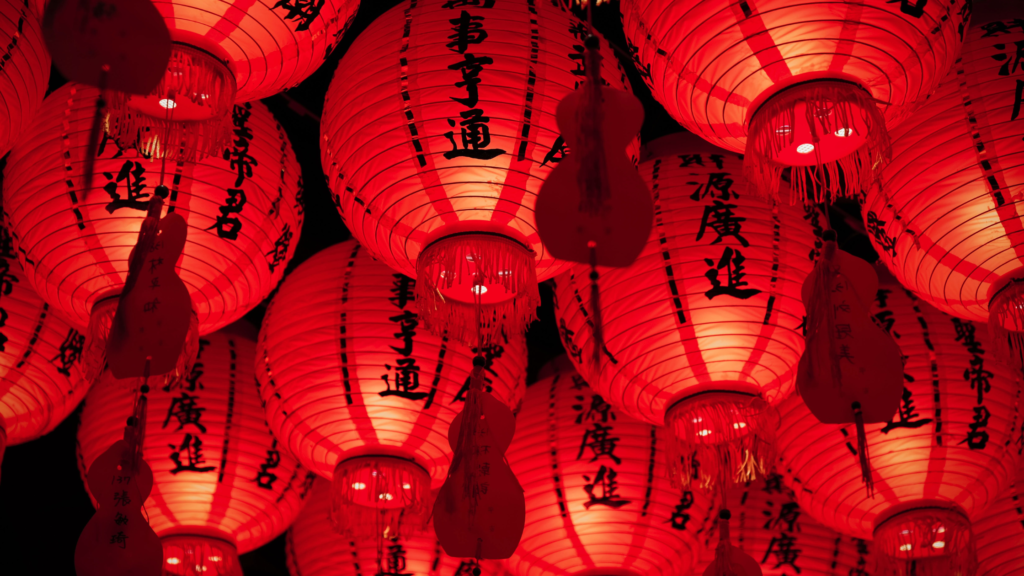Chinese New Year 2023: The Year of the Rabbit

Chinese New Year celebrations start on New Year’s Eve on 21 January and mark the first day of a week long public holiday in China. Although celebrations continue for around 15 days, ending on 5 February. Also known as Spring Festival, it’s the country’s biggest holiday of the year, seeing the world’s largest human migration at one time. A forecast has been made of 2.1 billion trips for 2023, as people travel to spend time with family. In case your interested, the world’s second largest human migration is for Thanksgiving in the USA.
Year of the Rabbit
New Year’s Day is on 22 January and starts the Year of the Rabbit, according to the Chinese Zodiac.
Those born in 1939, 1951, 1963, 1975, 1987, 1999, 2011 and of course 2023, are all “Rabbits” and are believed to be vigilant, witty, quick-minded, and ingenious.
Aside from the predictions for 2023 for all 12 of the zodiac signs. There are numerous traditions which play a huge part of the celebrations.
Traditions:
Approximately 10 days before New Year’s Day, homes are thoroughly cleaned to remove any bad luck that may be lingering, known as the “sweeping of the grounds”.
Traditionally New Years Eve and New Years Day are celebrated with family only, and include religious ceremonies that remember past ancestors.
Red envelopes are also received from family members which contain small amounts of money. This is to express good wishes for the year ahead. The red of the envelopes symbolise good energy, happiness and good luck.
Throughout the 15 day period there are fireworks, dances and feasting with friends and family to celebrate the New Year. Culminating on 5 February (the last day of the celebrations) with the Lantern Festival. On this night colourful lanterns light up homes, and traditional foods such as yuanxiao (sticky rice balls that symbolise family unity), fagao (prosperity cake), and yusheng (raw fish and vegetable salad) are served.
Save 10% on Selected Teas
China and its culture are of course a huge part of the tea industry and so at The Tea House we love honouring Chinese New Year. So, once again we have put together a collection of wonderful teas to celebrate the New Year’s arrival with 10% off until 31 January.
Our Special Chinese New Year Teas
China Sencha Long Leaf Tea
A favourite everyday tea from China. The fine large leaves – prepared Sencha style – produce a mild, sweet taste & a delicate green-yellow infusion.
Chun Mee Precious Eyebrow Tea
Chun Mee is a pan-fried green tea and the leaf has a lightly-curved shap. The curved shape is created during the hand rolling process and is said to resemble the classic Chinese ladies eyebrows. Hence the name “precious eyebrows”.
Flowering Tea Ball Selection
These flowering tea balls are made from green tea leaves shaped into differing floral arrangements. They bring a show-stopping finale to a meal. The flowers unfurl once they are submerged in hot water, and look amazing in a glassware.
Includes:
- 1 x Camelia Vanilla
- 1 x Jasmine Garland
- 1 x Mango Lily
- 1 x Marigold Lychee
- 1 x Peach and Marigold
Superior Oolong leaves from Hainan rolled into distinctive pellets. They are lightly coated with ginseng and liquorice. When it is brewed it creates an amber cup with an aroma of orchids.
A compressed black earthy pu-erh that’s perfect for travelling.
Classic Pu-Erh from Yunnan. Twice-fermented, large leaf tea in a mini “bird’s nest” shape – perfect for travelling. A dark, full-bodied tea with a distinctive earthy taste.
Tightly rolled pearls of black tea. Aromatic and slightly smoky. A mild taste yet full-bodied, well suited to accompany traditional Afternoon Tea. Fit for a Queen or a King.
Tie Guan Yin – Iron Goddess Of Mercy – Oolong Tea
A tea of legend and one of the most revered Chinese teas. A sweet and floral superior grade Oolong from Fujian Province.
